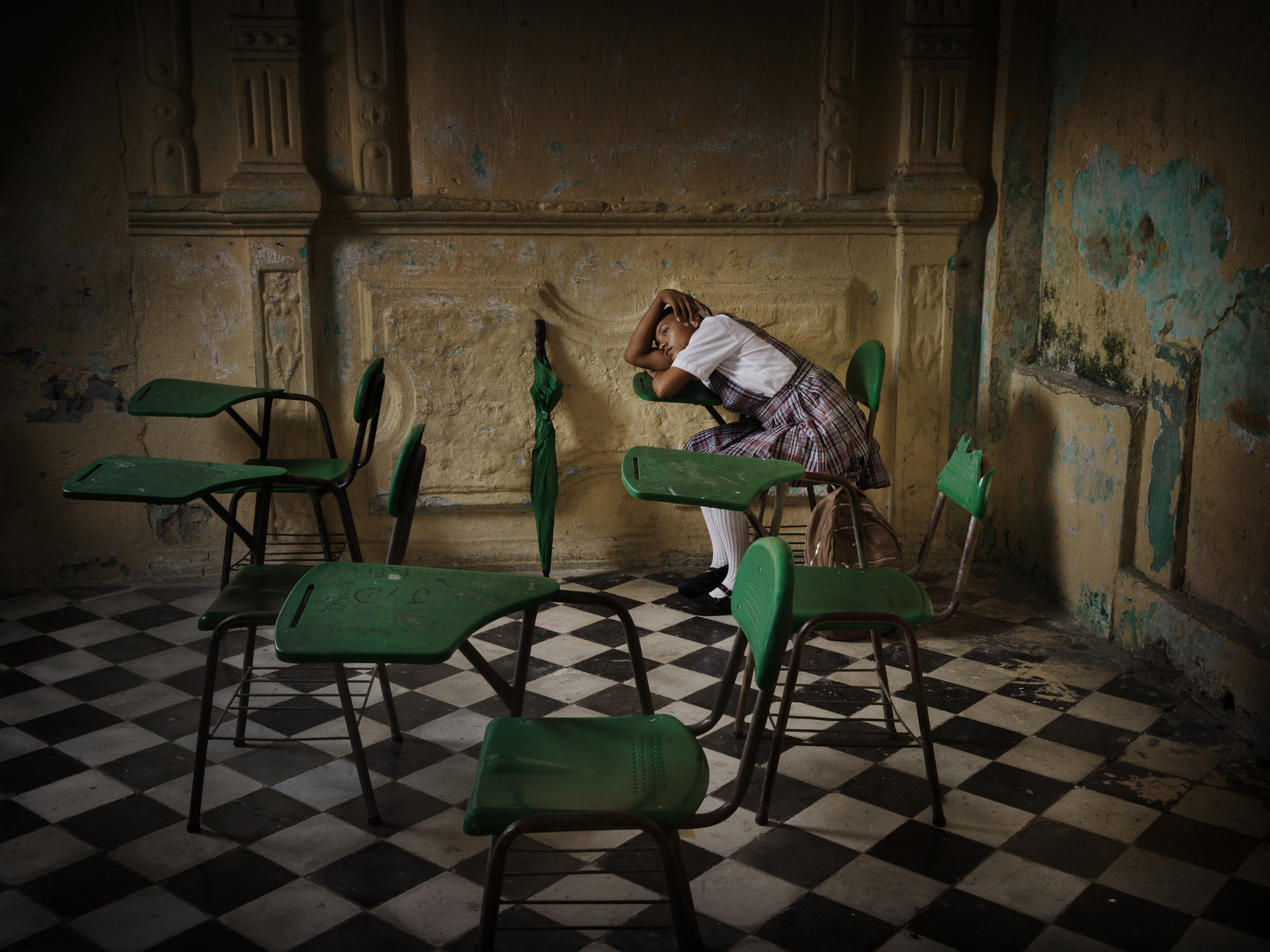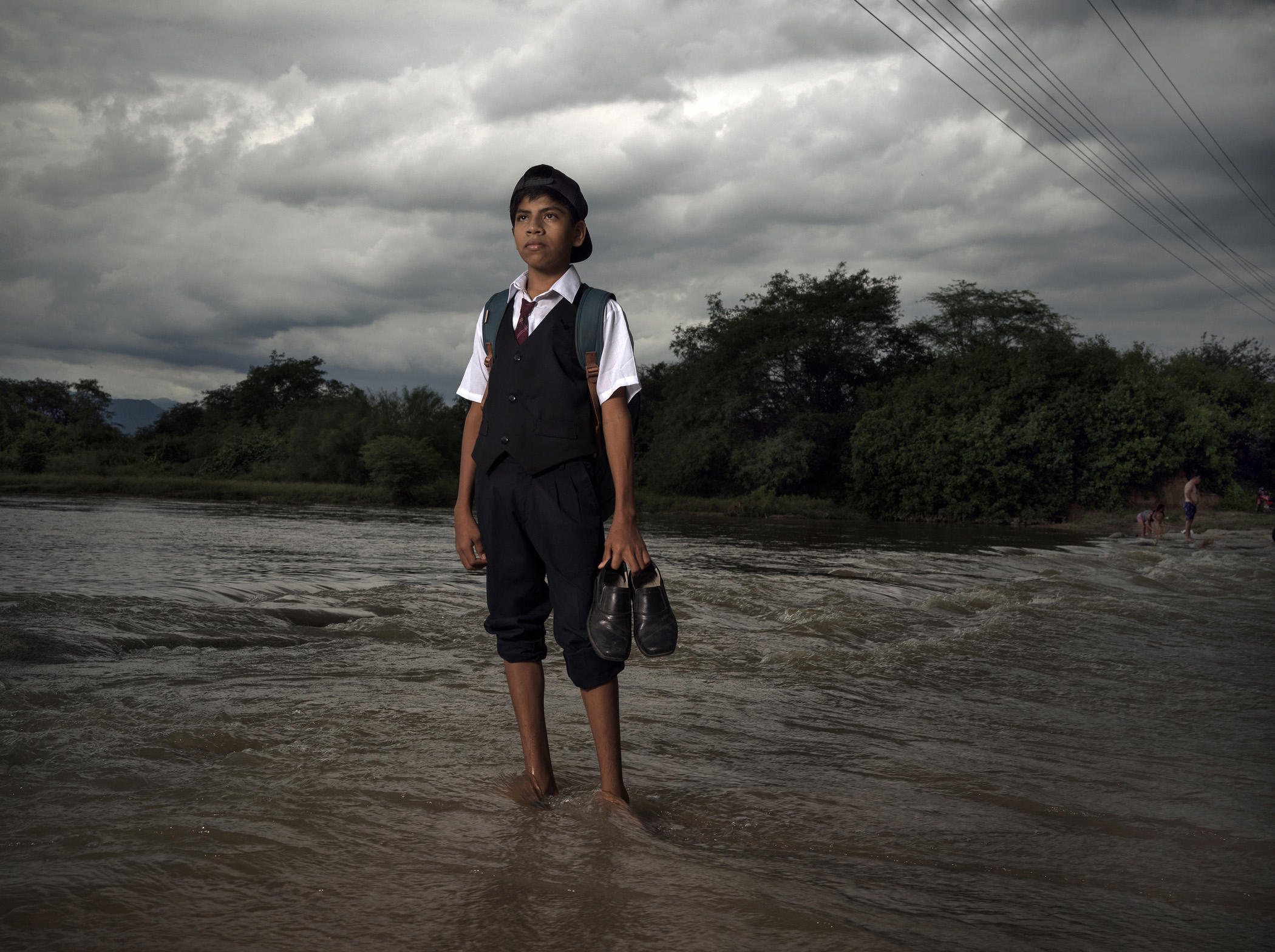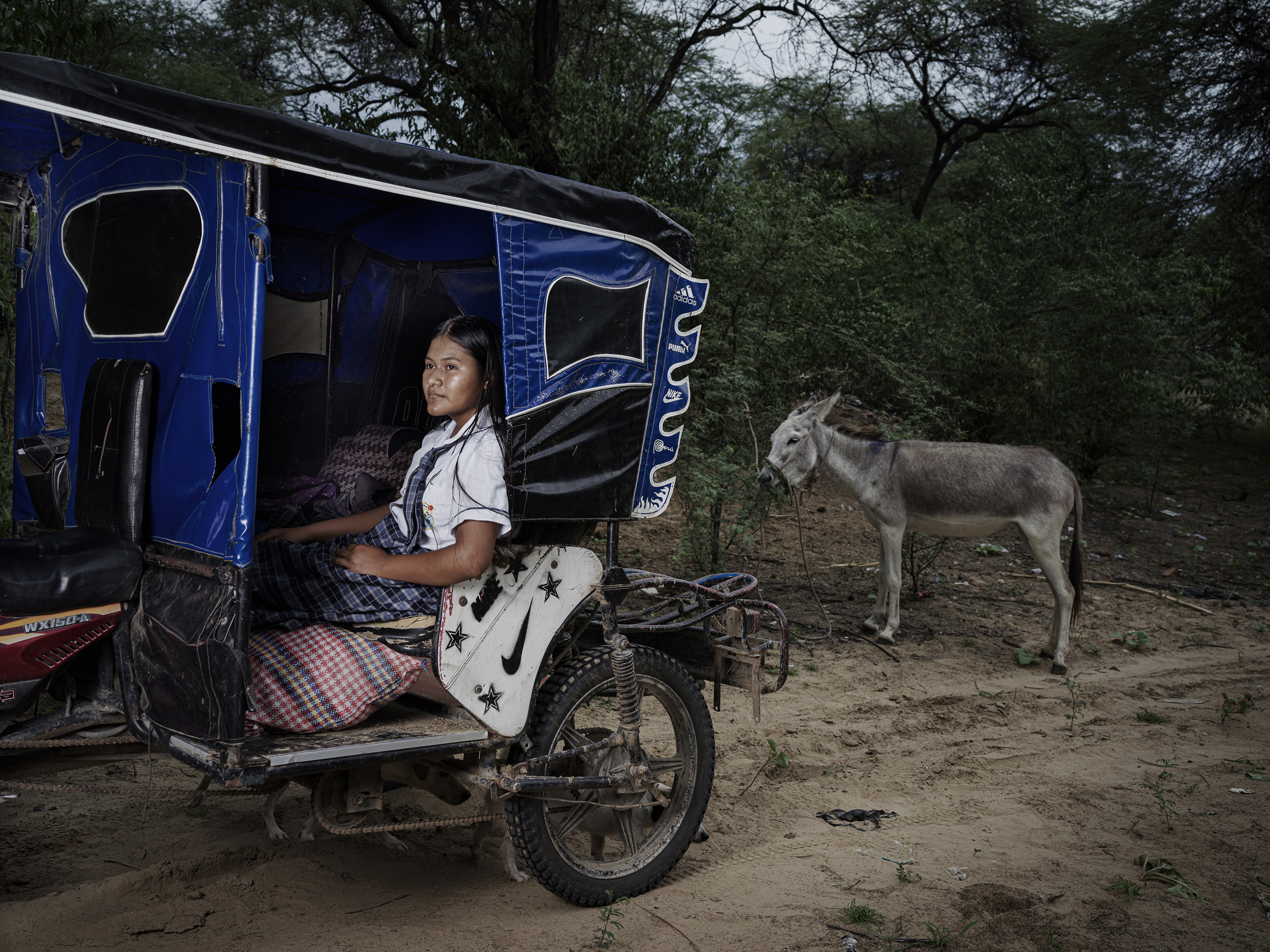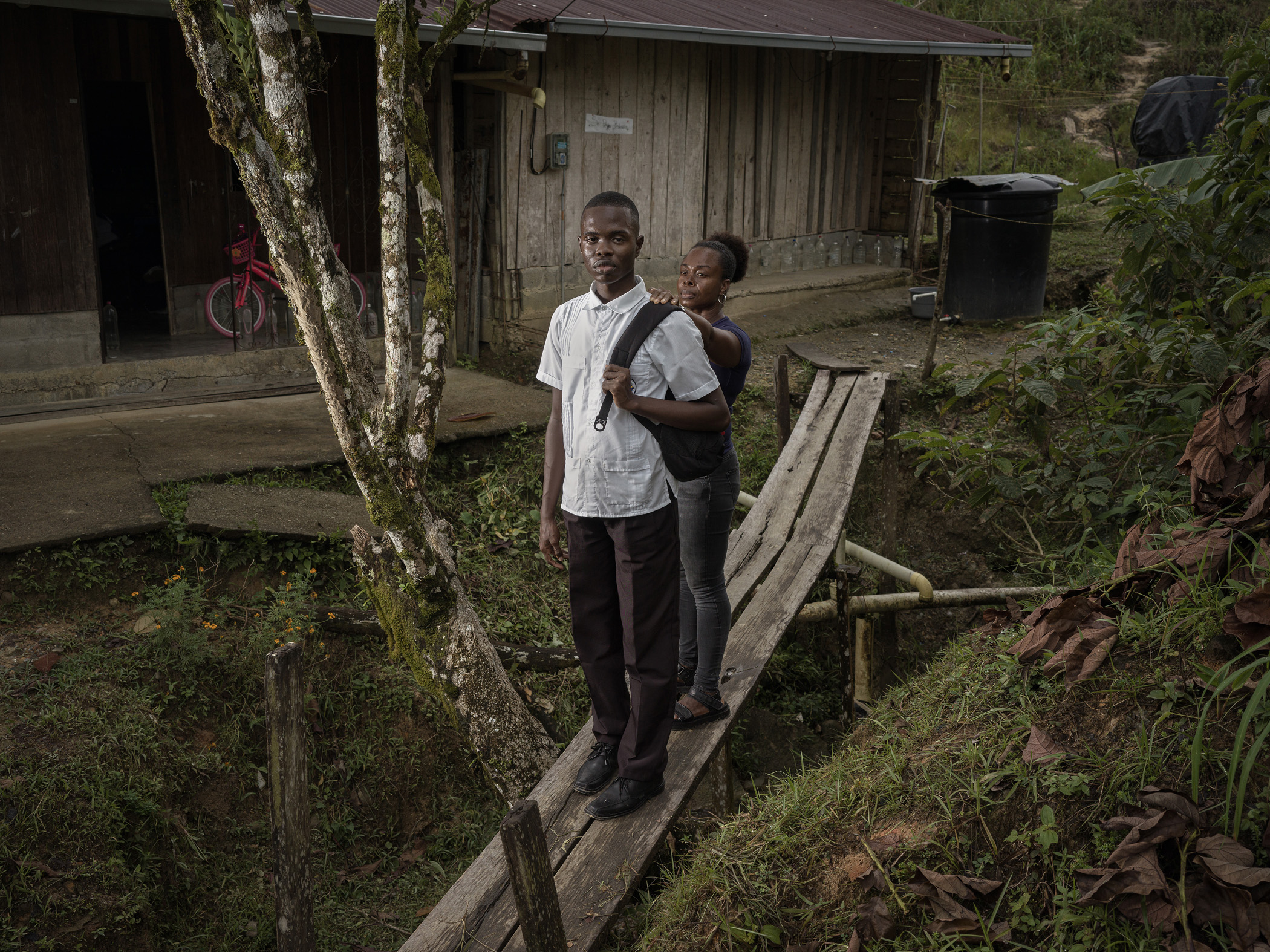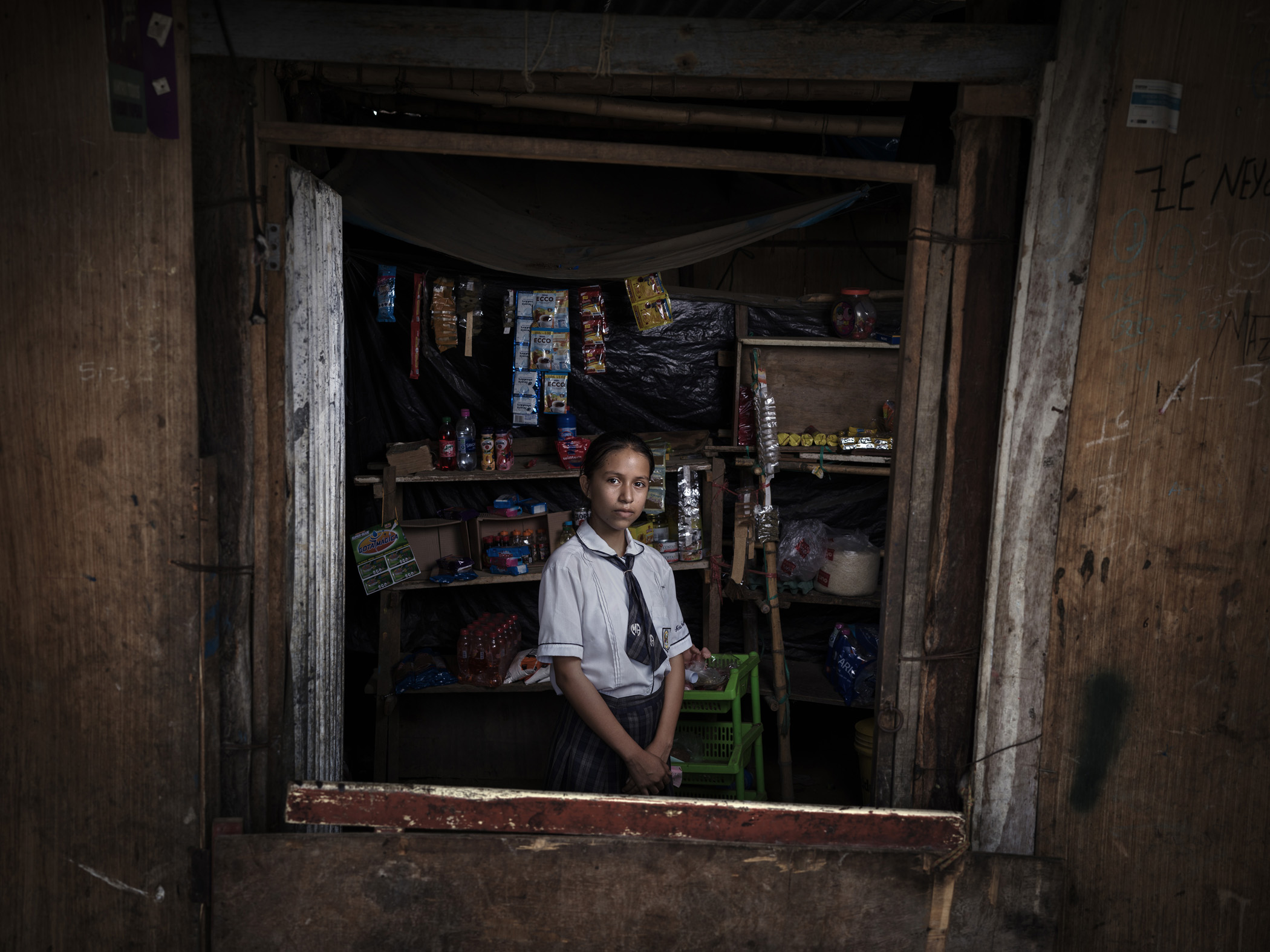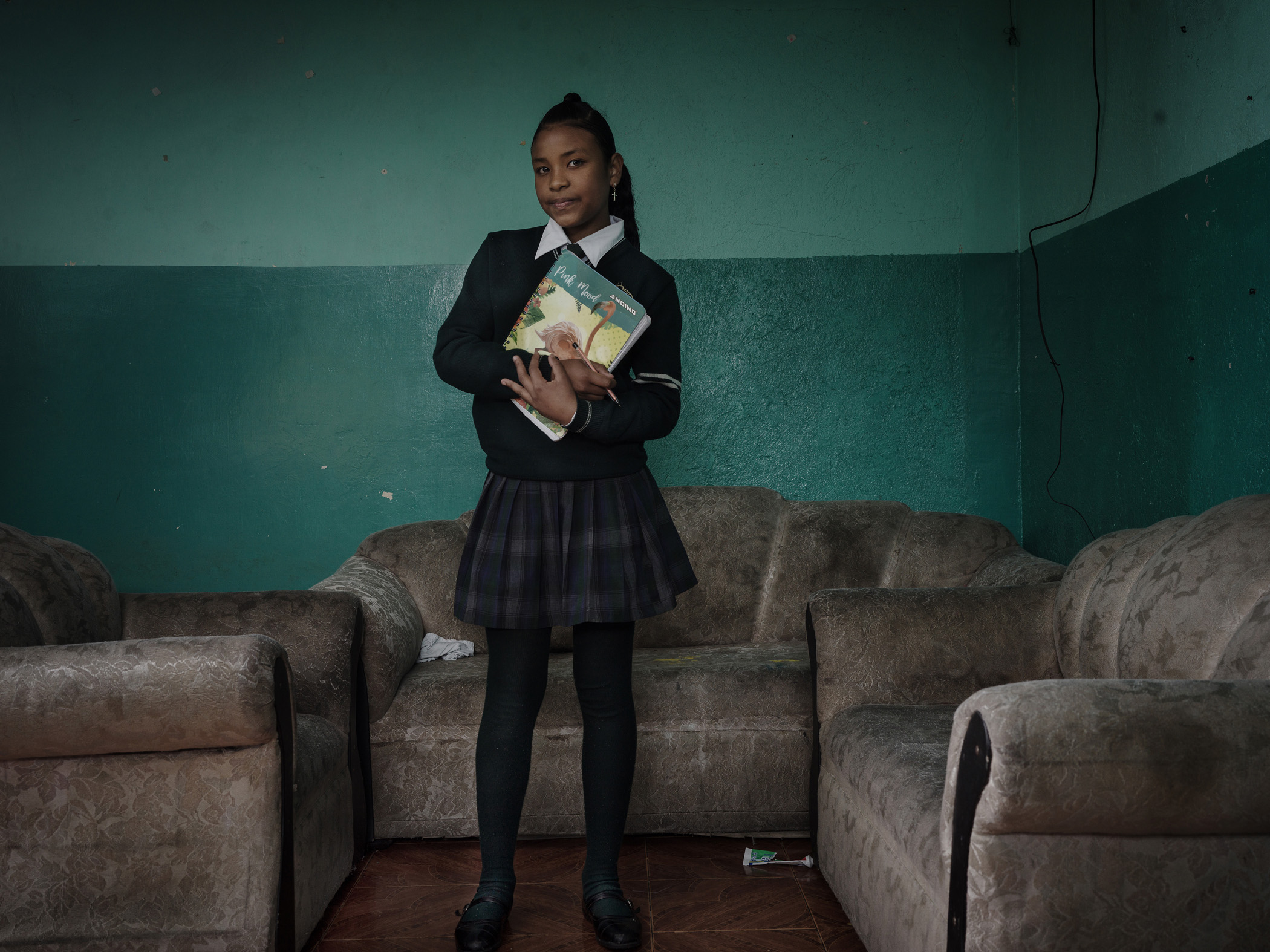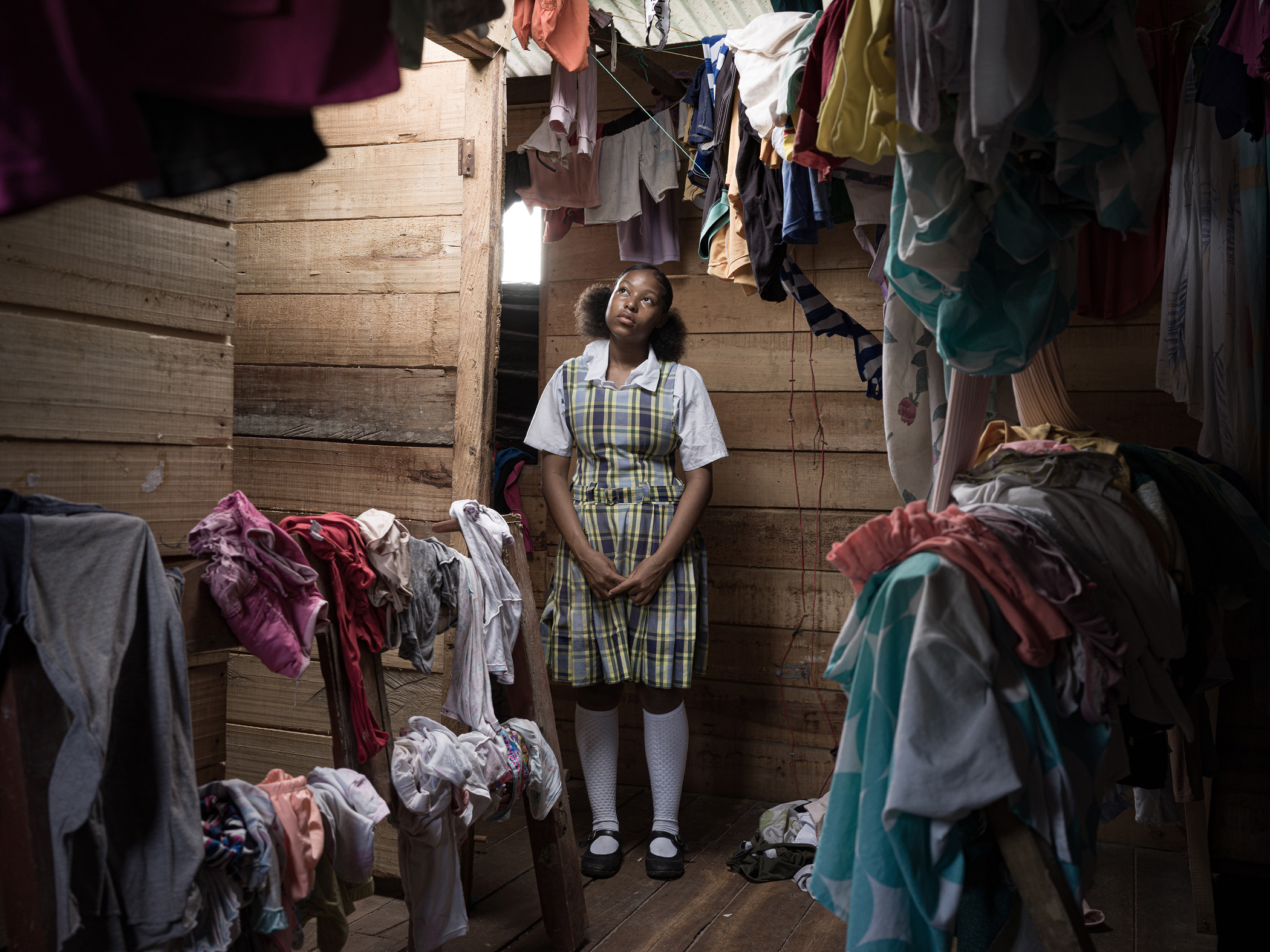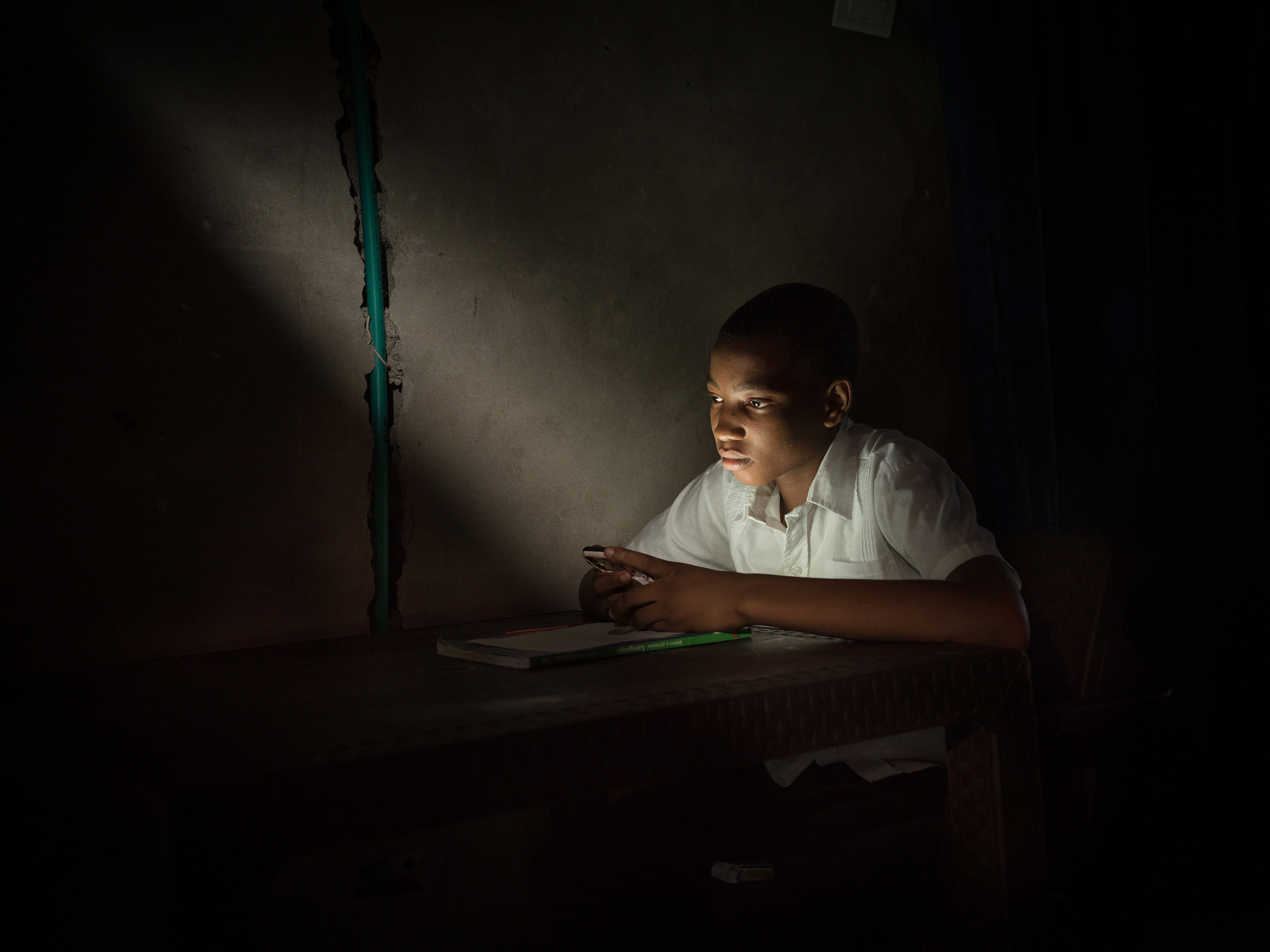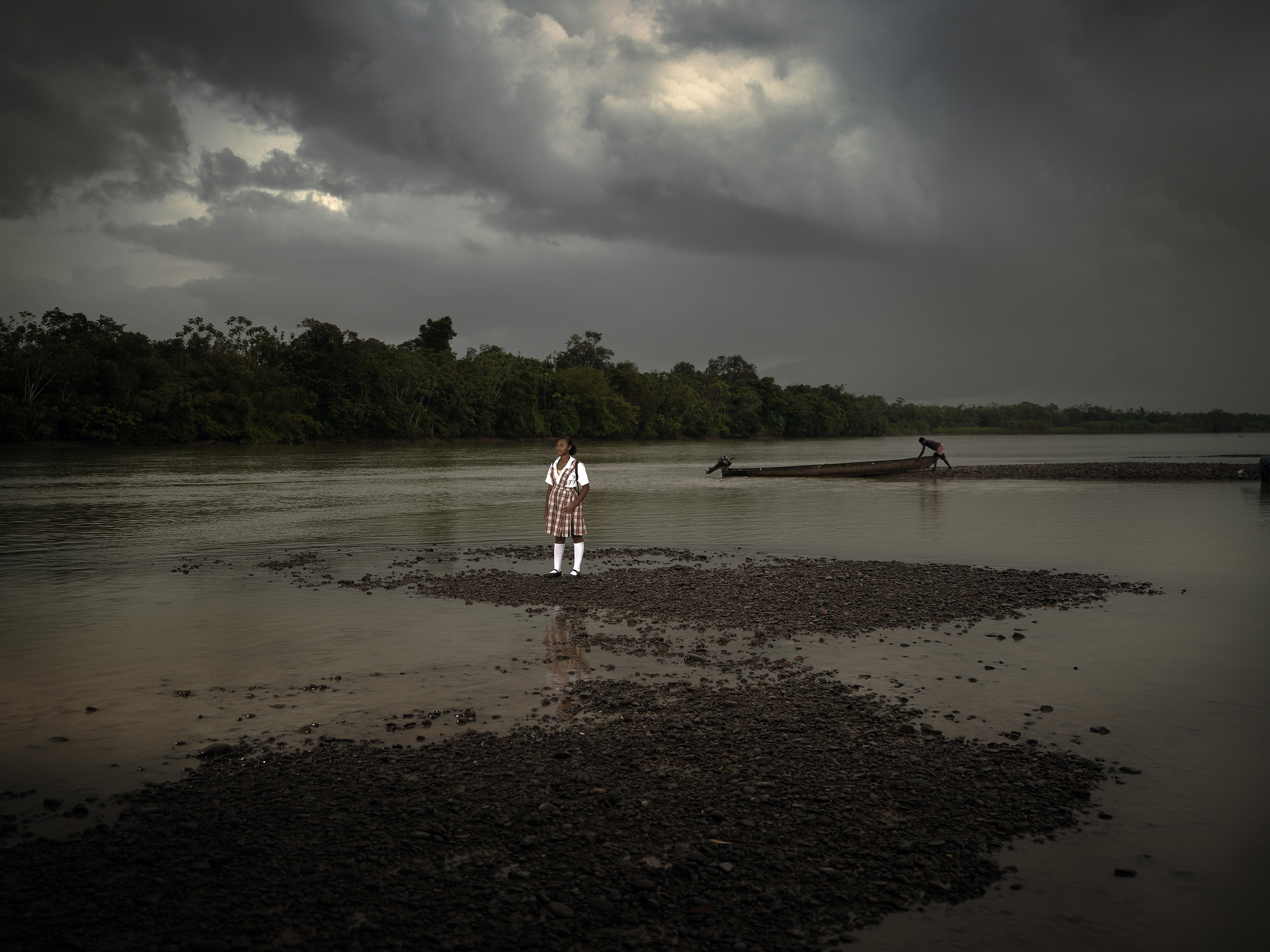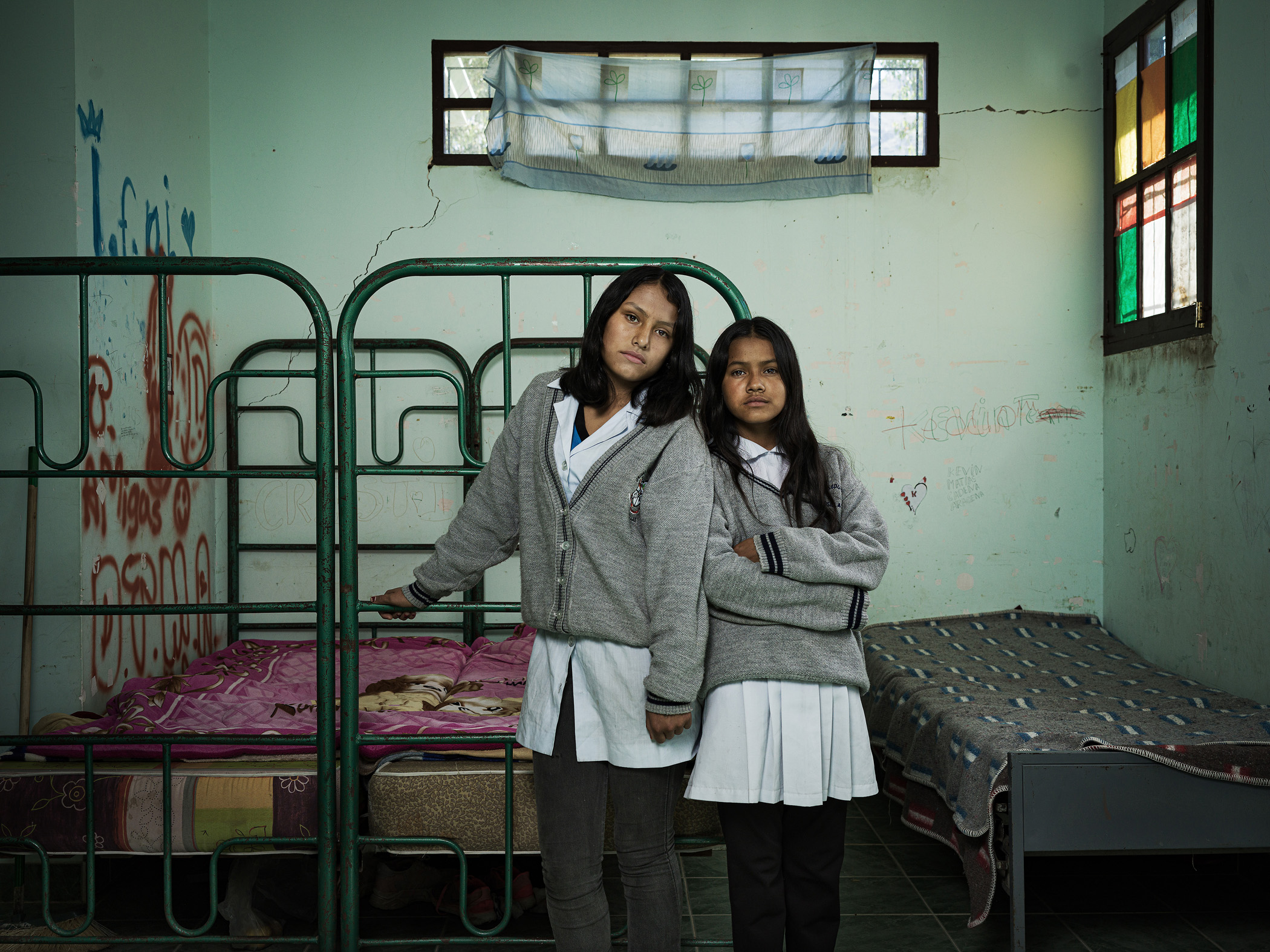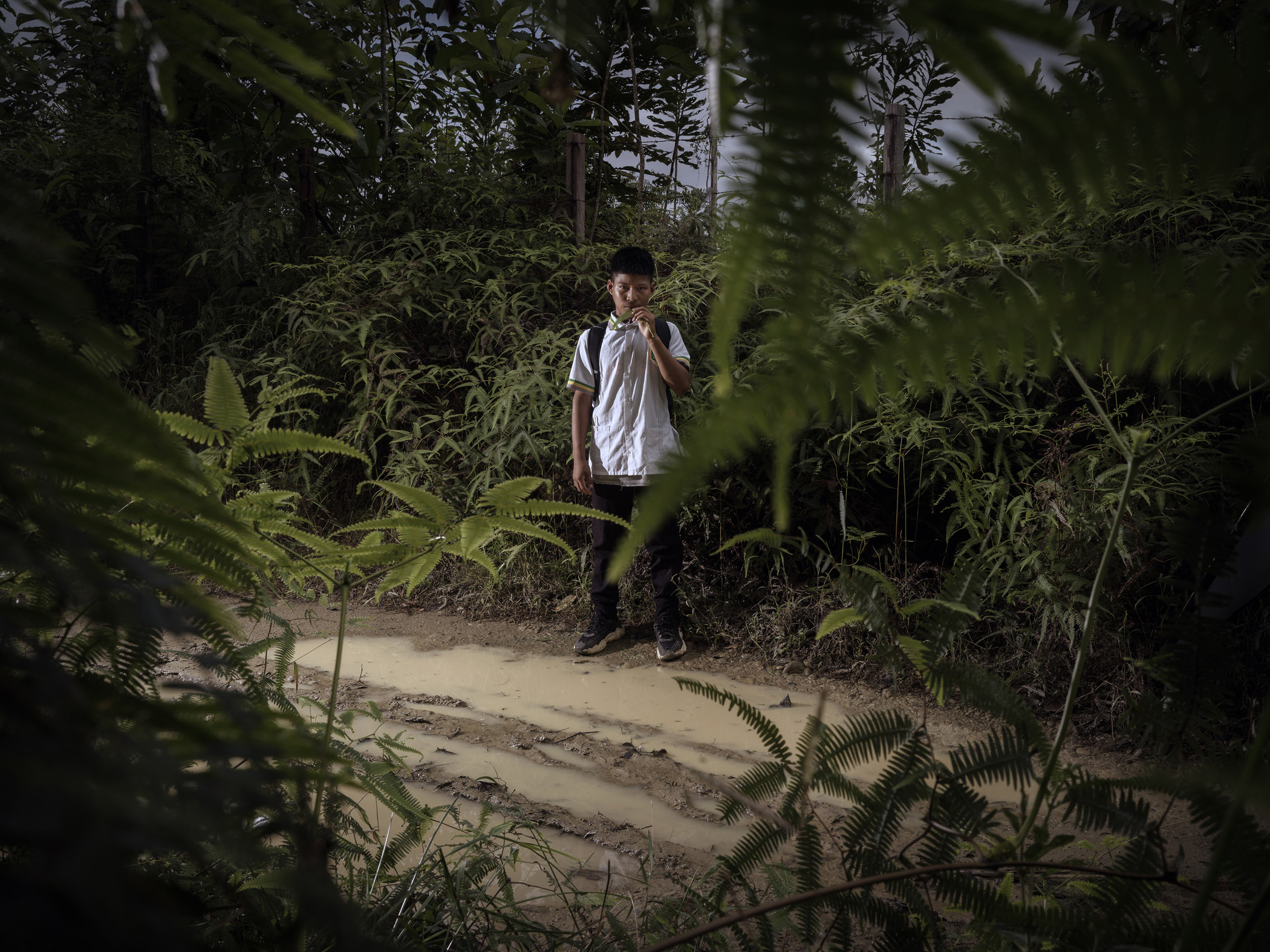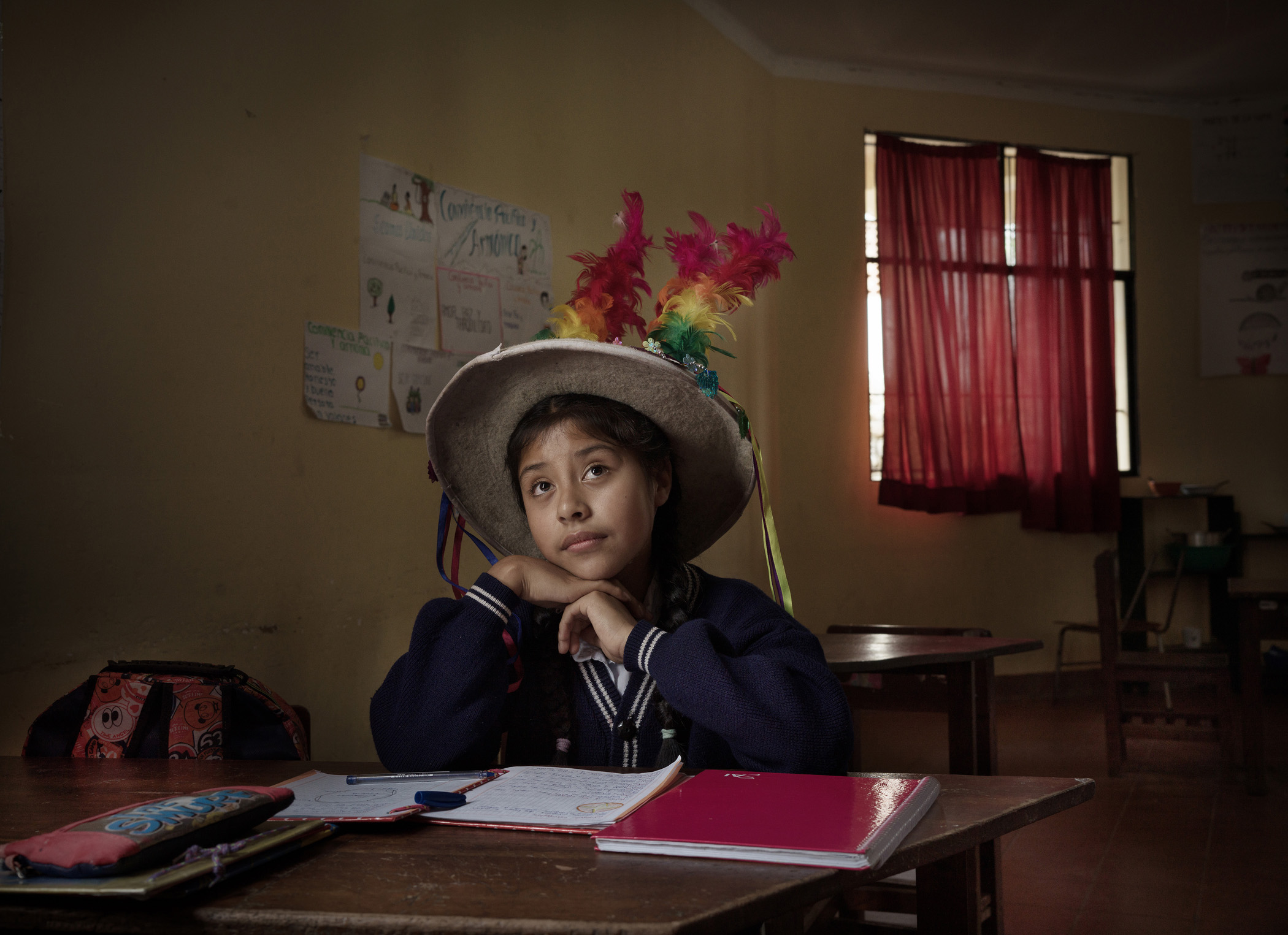“When can I go back to school?” That’s the first question many children across Latin America start their day with. For millions in the region, there’s often no guarantee that their school will be open, accessible or safe that day.
Classrooms caught in crossfire, hours-long walks and buildings destroyed by natural disasters are just some of the obstacles children face. On top of that, extreme poverty and displacement force many to drop out.
Even when school is out of reach, children have an innate desire to learn. They turn bedrooms into study spaces, long walks into daily routines and
ruins into classrooms. Whether it is sharing textbooks with friends, scraping together coins for a school uniform or leaving their homes to stay in remote boarding schools, their determination propels them on to find ways to keep learning.
In these portraits, Chris de Bode captures how children and their communities, even in the face of conflict, disaster or poverty, hold on to education. The series
highlights children’s unwavering drive to learn.
Erika and her parents. Quito, Ecuador
In a country where sexual harassment at schools is widespread and sex education is limited, Erika’s parents fear that a teenage pregnancy could derail her dreams of going to university.
Sexual and gender-based violence is a longstanding, pervasive problem in Ecuador’s schools. Reports indicate that over the last decade, thousands
of cases of sexual violence have been documented, involving teachers, school staff and even students. Walking to school as a girl comes with its own set of risks too. Every day, 12-year-old Erika is accompanied by her father. “There was one day when I had to go by myself, and a motorcycle followed me,” she recalls. “The driver cut me off and tried to grab me. It was really scary.”
Erika’s father is worried about his daughter’s future, not only because of the risk of violence but also the lack of sex education. “It’s like schools here are afraid to teach children about their bodies. But it would prevent many teenage pregnancies,” he says. “My biggest concern is that this could happen to Erika too. She knows what she wants: to study and to succeed. We hope she can go to a university.”
Katarina (13) feels unsafe in her school buildings. Choco region, Colombia
In many schools in Colombia's Choco region, students are at risk due to construction issues. Katarina (13) says she feels unsafe due to the cement walls in her school building. "The cracks in the wall get bigger when it rains. One of the walls collapsed down the hill."
As the building is old, rainwater often leaks through the roof. "The teachers try to improve the walls and roof, but it doesn't get much better", Katarina continues. "It is difficult to focus in a building like this."
Due to power outages, the school is often without electricity. "If I were the head teacher, I would fix the roof. And build a waterproof room where we can
take IT classes. Learning without internet just doesn't make sense."
Still, Katarina remains committed to her education. At just 13, she is already advocating for a safer school, not only for herself, but for her peers as well.
Stalin, 14, lives in a sandy, remote village in the northern region of Peru
Every day, he rolls up his trousers and wades through the river on his way to school. During the rainy season, which normally runs from March
to April, high water levels force him to stay at home. “The current of the water is strong, and sometimes people die after being pulled away by the current,” he says. “It’s too risky.” When it rains, Stalin misses weeks of school. In recent years, the rainy season has lasted longer and the storms have become more intense. “I fall behind my classmates,” he admits. “I’m the only one who has to cross the river. I feel like I’m missing too many classes. It sucks.”
The months of rain not only affect Stalin’s route to school but also the school’s infrastructure.
“Sometimes the rain comes through the school roofs. Then we get classes via WhatsApp. But at home, we don’t have any connection when it rains.”
Supported by Plan International’s project, which includes extra classes, Stalin is catching up on part of his learning gap. “I need more help in class, especially in math, to keep up with my classmates. I hope to be at the same level as them again.”
An old, barely functioning 'moto-cicleta' is the only chance Yulitza, aged 16, has for a quality education.
Despite daily struggles with a failing motorbike and financial hardship, Yulitza, 16, travels hours to attend a better school.
An old, barely functioning motorbike with a flimsy sidecar is the only chance Yulitza has for a quality education. Every day, she and her brother make a journey of an hour and a half to school on the motorcycle that once belonged to their uncle. “I didn’t want to go to the schools near my village,” Yulitza says. “There are too few teachers. And even when they’re present, they often don’t teach. Sometimes they send the students home early, like at 1pm, while school is supposed to go until three.”
The family depends on the motorbike, which consumes about 30 soles (£6.30) worth of fuel each week. There’s not enough money for maintenance, partly
because the little income the family has goes towards school supplies.
To help her stay in school, Yulitza receives financial support from Plan International. The organisation also works to raise awareness about the importance of education through sessions with parents. She also takes part in awareness sessions, helping her stay focused on her education. “I want to be so many things,” she says. “Right now, I’m thinking about becoming a psychologist, a doctor or a teacher. Or maybe an accountant.”
Yael (16) lives in Colombia's Choco region, where violence prevents many from going to school.
Yael (16) lives in Colombia's Choco region, which is affected by an ongoing conflict that forced thousands to flee their homes. The forced recruitment of children as young as nine, both girls and boys, is present in many regions throughout the country. Often, the risk of violence deters children from travelling to school.
To shield her son from any threats, Yael's mother walks him to school every day and in the afternoon, she picks him up. "When we walk quickly, it takes about twenty minutes", Yael says. "It would be safer to take a motorbike, but we can't always afford that.”
Walking to school together has deepened their relationship. Yael says: "I love philosophy because I want to understand the reasons behind ideas and actions. When I was younger, my mom was very strict. Now I understand that she wanted to protect me. Our conversations are deeper than before. She is a really cool mom."
Greysi (13) runs a shop to support herself. Piura region, Peru
Growing up in a community that grapples with extreme poverty and lacks basic services, Greysi’s family struggled to afford food and rent,
let alone school materials. “That’s why I decided I should take matters into my own hands”, says the now 13-year-old, with a maturity far beyond her years. Greysi started selling glasses of wobbly gelatine and crushed ice at village meetings two years ago. “From what I sold, I invested in new products, like cookies and soda. My sales got better and better, so I decided to open my own shop.” Standing in front of her little store in an informal settlement in one of the most marginal neighbourhoods in northern Peru, she proudly talks about the growth of her small business.
“With the money that’s left, I buy school supplies for me and my little sisters. And I try to save up for university.” Higher education is out of reach for most students in Peru, Greysi realises, and that motivates her to expand her shop. “I want to be a lawyer, but university is extremely expensive. That’s why I save as much as possible. And I teach my little sisters to do the same.”
Like many refugees in Ecuador, extreme poverty puts the education and future of Saray (11) at risk. Quito, Ecuador
Displaced from Venezuela, 11-year-old Saray and her family struggle to make ends meet. While Saray, her parents and siblings have found safety in Ecuador, generating income is a constant battle, as her father relies on an informal job. Saray is the only one of her siblings who goes to school and her entire family works to support her education. Paying for the textbooks and uniforms remains a burden, Saray explains: “We need a new notebook for each subject but we can only afford one.” Without the proper materials, she risks failing courses.
In addition to textbooks, the school requires three different uniforms: “A formal one for Mondays, a sports uniform and a regular one,” she says. Ultimately, the school psychologist eased some of the family’s financial strain by helping them obtain secondhand uniforms.
Her family hopes that she will become a lawyer and break the cycle of poverty. “It’s a long shot,” her mother admits. “But I am motivated,” Saray says.
Edward (11) finds comfort in his dog as he faces school bullying and racial discrimination in Quito, Ecuador’s capital city.
Due to discrimination, 11-year-old Edward finds attending school an uphill battle. "I am bullied because of my skin colour and they call me names", he adds. Despite his strong desire to be in school, he often arrives full of dread. "Some days I don't want to go because of the comments”, he says.
In Ecuador, people of African descent still face social inequality and racial discrimination, especially in urban areas. After fleeing violence in another part of the country, Edward and his mother moved to Quito, but they do not feel comfortable in the nation's capital city.
Edward believes that when others speak up, it can make a difference. To combat racism and bullying and support students like him, Plan International organises awareness sessions and trains both teachers and students to advocate against exclusion.
At home, Edward's dog helps him feel better when he feels sad. Edward dreams of becoming a veterinarian. He admits: "I like animals more than people".
Yili (16) does domestic work to buy materials for school. Choco, Colombia
In Colombia, gender inequality continues to push girls like 16-year-old Yili out of school, as the burden of domestic work and caregiving often falls on them.
Yili describes how girls in Colombia often do domestic work to pay for an education. “For the past few years, I worked in people’s homes to earn money for school supplies,” she says. Balancing work, school, housework and caring for her younger siblings eventually caused Yili to drop out: “I failed two subjects and was not allowed to go back to school.”
Yili notes that it is often girls who drop out. “I have more boys than girls in my class. Another challenge is girls getting pregnant. It happened to one of my best friends. She dropped out of school and couldn’t find a job. Now she stays home with her baby.”
With support from Plan International’s back-to-school programme, Yili was able to resume her education. She still does homework while helping her mother at home, but the financial support allows her to devote more time to her studies. “If I had to do housework all my life, I would be so bored. That’s why I want to go to school. Physics and chemistry, and learning new things, that’s what I love.”
Samuel (14) is often kept away from school by conflict. Choco, Colombia
In Colombia’s Chocó region, where continuing conflict often confines students to their homes, Samuel struggles to keep up. While relying on his father’s phone and limited electricity to study, he longs to return to school.
“I really want to go to school every day,” says Samuel. Sometimes, he has no other option than to stay at home because it is too unsafe outside for children. When forced to stay at home, Samuel receives his lessons via WhatsApp on his dad’s mobile phone. However, when his dad goes to work, Samuel is unable to study. This is just one of the many reasons he is eager to be in school. “I want my teacher to explain things and to have someone to review and correct my exercises,” Samuel says.
Isabel (13) often misses school because of the challenge of getting reliable transport. Colombia
Living on the other side of the river makes it difficult for Isabel, aged 13, to get to school. She is the last to arrive in class each day. ' I leave at six and wait for the boat', she explains. 'I want to leave earlier, but taking the boat in the dark isn't an option. By the time I get to school, the first class is already over.'
Isabel hates being late because she misses the teachers' explanations and has to copy assignments from classmates. 'I don't want to hear things second-hand', she admits. Boat trips are also expensive for her family, costing 2,000 Pesos (about 0.37 GBP) for a one-way trip. 'When I leave school, there isn't always a boat available. So sometimes I pay someone with a canoe. Otherwise, I have to wait longer at the pier for a boat to go home.'
Carla (14) and Janet (12). Tarija department, Bolivia
Sisters Carla and Janet attend a distant boarding school because there are no high schools near their home town. The school’s poor living conditions, and feelings of loneliness and isolation make life difficult for the sisters.
Carla says: “Only kids from distant places come here. I really miss my father and brother. My dad struggles to pay for our school costs. Because meals are included here and we don’t have to travel to school, going to a boarding school is more affordable.”
After their mother unexpectedly died, Carla had to leave school. “I didn’t go to school for two years to help my dad with chores and take care of the family,”
she says. “After a while, he saved up enough money so I could go back to school.”
Carla and Janet still struggle to afford the clothing for school. Luckily people in the village organised a fair to raise money, Carla says: “We used that money to buy uniforms. Without a uniform, you can’t go to school.”
Bryan (14). Choco, Colombia
It takes Brayan two hours to get to school each day. His route is not without risks. “The road I take is long and muddy, especially when it rains. Sometimes there are dangerous snakes on the road,” he says.
These issues contribute to school dropouts in Indigenous communities in the Colombian region of Chocó, as families often live far from regular schools.
Brayan explains: “I need to walk a long way to the terminal and then take the bus to school. I often go without breakfast. When I am late, I often cannot enter the class any more.”
Because bus tickets are too expensive for Brayan’s family to afford every day, he sometimes stays at home.
His journey to school is further complicated by the need to take care of his school uniform. “My father had to sell our chickens to purchase it. That’s why I cannot damage or stain it. When boys in my class play football at school, I don’t play along because I am afraid to rip my pants,” he says.
Vioeta (11). Tarija department, Bolivia
For Violeta, who is 11, school is a vital refuge: a place where she feels safe and inspired to dream of becoming a ballerina, in contrast with the
risks she faces on her daily journey. She pictures herself performing on a stage. “I hope to be in a ballet,” she says. “When we dance at school, I wear this hat. I feel relaxed when dancing.” School is a place where Violeta feels secure and happy.
However, travelling to school is a different story. Violeta travels along a path through the woods to get to school. Many children in her community walk
this path but for girls, it can represent an additional risk. “Sometimes there are drunk people on the road,” she says. “When I don’t walk with my brother, they try to harass girls like me. It is less safe for a girl.”
Leandro (11). Tarija department, Bolivia
Every day, Leandro, who is 11 years old, walks along the side of the Pan-American Highway to school. 'Cars drive really fast, and there are no speed bumps. The path I walk is very narrow in some places', he says. Not too long ago, there was a fatal accident on the road. 'Especially when I am by myself, I feel like I could get hit easily.' Sometimes Leandro takes the bus to school. 'But only if the bus comes. It doesn't come often', he explains. 'Next year, no one knows if the school bus will still run.'
Despite the risks, Leandro goes to school each day. 'At least I can still go to school. It takes me about 30 minutes. But if the bus stops running,
some of my classmates won't come to class anymore.'Leandro and his family migrated from Argentina and now live in Bolivia, close to the southern
border. He notices differences in the education system. 'In Argentina, the school supplies and classrooms were better', he says.
The road to school is not only dangerous because of traffic, it also runs alongside steep cliffs. 'Sometimes there are landslides and hail storms around here', Leandro says. 'When it rains, I feel even more unsafe. Going to school is dangerous.'
Aleyn (11), Alely (15) and Anthony (2) with mother Dalita. Tarija Department, Bolivia


